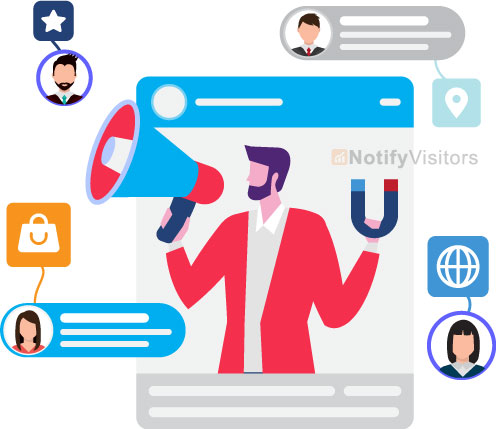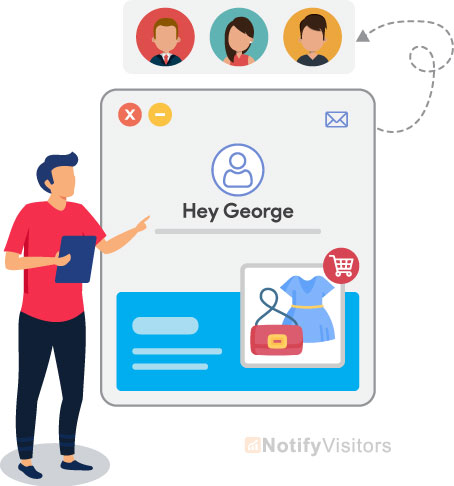Business-to-customer marketing, commonly referred to as B2C marketing, is a set of strategies, practices, and tactics that a business uses to offer its products or services to customers.
B2C campaigns not only focus on the usefulness or value of the product but also on getting an emotional response from the customer and improving the customer experience.
Contents
Difference Between B2B and B2C Marketing
Simply put, B2C companies sell directly to consumers. B2B companies, on the other hand, sell to other companies. These include managed services companies, business software, agencies, and consultants.
Regarding B2C versus B2B marketing, some key differences relate to the buying and selling process, the decision makers involved, and the cost of buying.
While a company is likely to conduct extensive research before investing in new software, office space, or a significant acquisition with another company, B2C transactions are often more impulsive and instantaneous.
Consumers often look for goods and services based on urgent needs and make purchases faster with less research and due diligence than a business. It gives B2C marketers a smaller window of opportunity to influence consumer behaviour.
Companies that focus on B2C marketing closely follow trends, study their customers’ buying habits and closely monitor competitors’ strategies.
| B2C Marketing | B2B Marketing |
| Sells directly to the end customer. | Focuses on a company or business. |
| Customers want to have all the information about the product together. They hardly do any research to understand the product. | Customers usually do more research before purchasing the product. |
| Focuses on the emotional aspect associated with purchasing a product. | Targets on the features and value of a product. |
| Sales are on a small scale. | Sales are on a large scale. |
| Consumers make impulse purchases immediately after seeing the product advertisement or within a very short time. | A much longer buying process is involved. |
Importance of B2C Marketing
B2C is essential for any business that sells products or services. These include restaurants, drug stores, fashion brands, software companies, grocery stores, etc.
However, today the Internet has become the most popular channel for B2C brands to promote their products or services to customers. Almost all B2C companies want to participate in the $2.3 trillion e-commerce market and convert their business online.
B2C is beneficial for the following reasons:
- More Website Visits: B2C campaigns are created to entice potential customers to visit your website to learn more about your brand.
- Helps a brand to expand its customer list: When the number of potential customers visiting a company’s website increases, so does the number of new customers.
- Offers more sophisticated customer interactions: B2C companies can send more specific messages at strategic moments by knowing the target audience. At this stage, Market Segmentation comes into the picture.
- Increases the ranking of businesses in search engines: A website can increase its position in search results by using specific keywords. As a result, users are more likely to find your business.
B2C Strategies for 2025
Avoiding the noise means applying the right B2C strategies right now. Here are the most popular B2C strategies used by businesses in 2025 and some examples of successful campaigns.
1. Social Media
Social media platforms like Twitter, Instagram, YouTube, and Facebook continue to hold a strong position as one of the best ways to reach B2C customers directly. Creating and sharing content on these platforms not only allows you to promote your products but can also help boost your SEO.
68% of social media users say that social platforms allow them to connect with the brands they love, and more than half (51%) expect the companies they follow to know and treat themselves according to their social networks.
Knowing that customers want personalized behavior, marketers need to pay attention to social metrics when creating marketing and running campaigns.
2. Replacing PPC
Marketers looking to use PPC (pay per click) effectively in 2025 may need to rethink their strategy by discontinuing third-party cookies. Best PPC agencies in London can navigate these changes by replacing their PPC approach with strategies like:
- Contextual Marketing
- Using the new Google Analytics
- Use of Artificial Intelligence
- IP-Based Personalization
3. Influencer Marketing
Most influencers want to promote brands that are in sync with their values. In 2025, influencer marketing is expected to grow by 72.5%. Don’t forget to create a customized business proposal for each strategy, aligning your brand’s values with chosen influencers. We suggest using an editable proposal template to save time and resources.
Influencer marketing is integral to today’s marketing strategies, and it’s not going anywhere in 2025. Building relationships with influential people is vital to supporting your goals.
4. Targeted Email Marketing
The number of emails increased by 94% from 2020 to 2021. Experts forecast that it will go up again in 2025. Marketers continuing with B2C email marketing strategies must focus on proper segmentation and special offers.
In 2020, the email market was valued at $7.5 billion and was projected to grow to $17.9 billion by 2027. Email has been the best way to communicate with customers since the beginning of time and will continue to change in the future.
5. StoryTelling
Storytelling will be just as important in 2025 as it was in 2022. Connecting with your customers through a story can help you stand out from the competition.
Viewers can create a personal connection with the brand through storytelling and real-life examples or relevant topics. Every brand has a story, and creating engaging content makes those stories memorable.
Successful B2C Examples
1. Starbucks
Starbucks has cornered the market on unique beverages and quality service, which makes them so special to customers. They maintain this relationship with an app that rewards customers with stars for buying through it.
This B2C marketing strategy attracts customers and, more importantly, helps retain them as long-term customers. Promotions drive sales and strengthen the relationship between the consumer and the Starbucks brand.
2. Spotify
Spotify does a great job of shaping music relevant to customers based on what they listen to daily. They use data reports to collect information and find related songs based on what the user likes. It helps them create playlists of recommended songs that the audience wants to stream.
3. Toms
Toms Shoes sells successfully to its customers throughout the year. Showing previously reduced prices has a psychological effect that helps customers feel they are getting the best deal. Tom’s also offers a promotional discount if you sign up with your email address.
Wrapping Up
Today, providing a personalized brand experience is another vital component of marketing via B2C. Strong brands encourage customer loyalty and help customers stay engaged. Also, if customers are open enough to a brand and can recognize it quickly, they are more likely to find it worth purchasing.
Effective marketing strategies are critical to making a memorable impression on potential buyers. As the market changes in 2025, staying ahead of these trends will be critical to success.
NotifyVisitors help you implement the right B2C strategies for your business. To know more, you can schedule a demo with us and foster your business.
FAQs
1. Why is B2C Important?
B2C strategies try to convince the final consumer in an efficient way to buy your brand offering. However, different aspects must be considered before the final transaction occurs. Eventually, leads become prospects, and prospects become customers.
2. Why is B2C Beneficial to Consumers More Than B2B?
Business-to-consumers (B2C) is more fruitful to the end consumers than B2B because it involves direct interaction. Consumers come into contact with B2C brands on a personal level.
3. What Do You Understand About B2C Social Media Marketing?
B2C social media marketing creates highly engaging and shareable posts such as images, videos, and reviews. You can harness humor and emotion, give your brand personality, and build what Seth Godin calls a tribe.

























 Email
Email SMS
SMS Whatsapp
Whatsapp Web Push
Web Push App Push
App Push Popups
Popups Channel A/B Testing
Channel A/B Testing  Control groups Analysis
Control groups Analysis Frequency Capping
Frequency Capping Funnel Analysis
Funnel Analysis Cohort Analysis
Cohort Analysis RFM Analysis
RFM Analysis Signup Forms
Signup Forms Surveys
Surveys NPS
NPS Landing pages personalization
Landing pages personalization  Website A/B Testing
Website A/B Testing  PWA/TWA
PWA/TWA Heatmaps
Heatmaps Session Recording
Session Recording Wix
Wix Shopify
Shopify Magento
Magento Woocommerce
Woocommerce eCommerce D2C
eCommerce D2C  Mutual Funds
Mutual Funds Insurance
Insurance Lending
Lending  Recipes
Recipes  Product Updates
Product Updates App Marketplace
App Marketplace Academy
Academy






